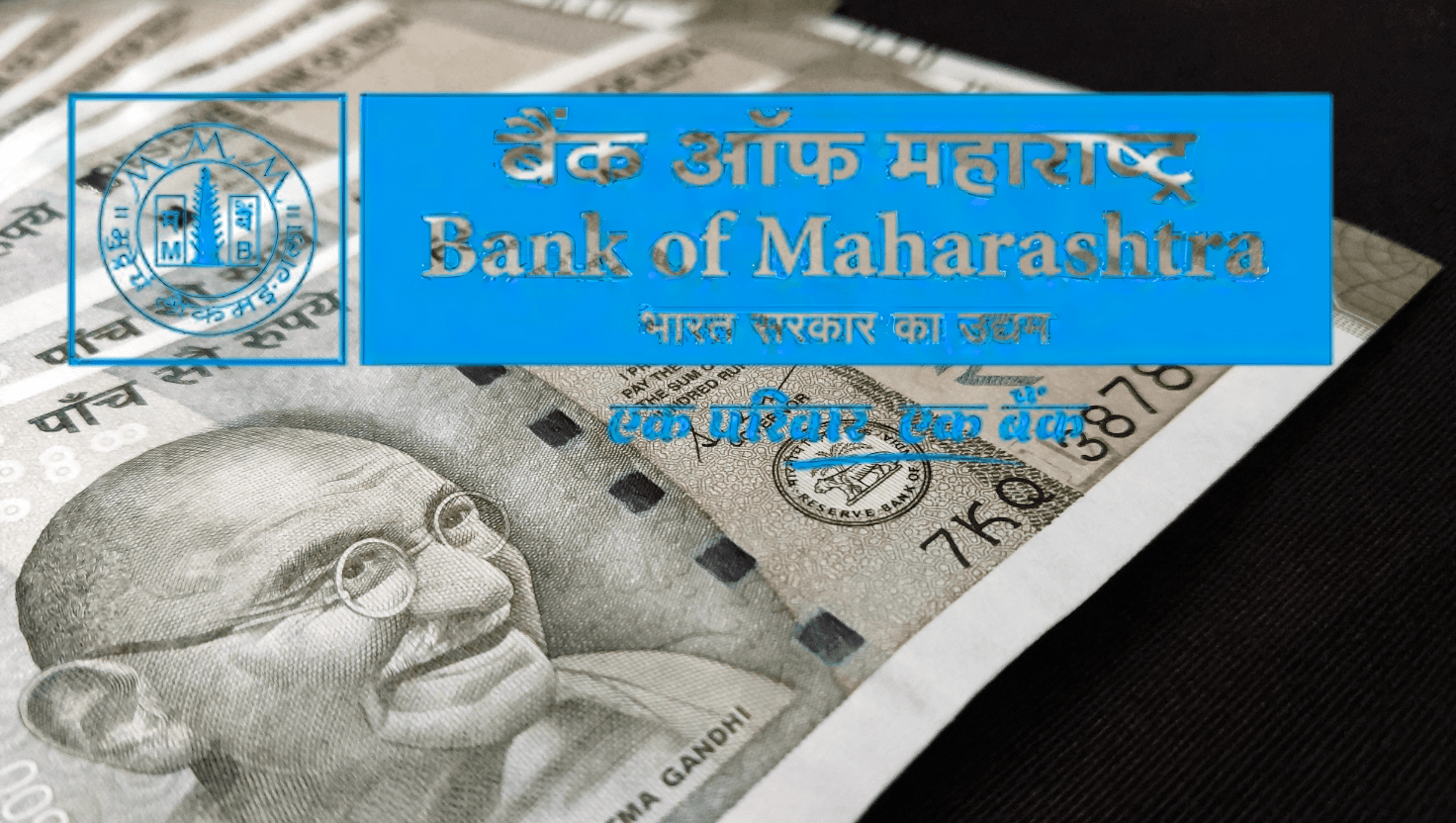
Bank of Maharashtra (BoM) sparking India’s next PSU banking revolution? With the government’s stake slashing from 79.60% to 75%, BoM’s ₹5,521 crore profit, 1.85% NPAs, and 42% digital growth signal a market-driven future. Will this SEBI-driven stake sale ignite Dalal Street, attract FIIs, or hint at semi-privatization?
When the oldest public-sector banks in the country announces a bold equity move, the ripples are felt across Dalal Street. The Bank of Maharashtra, with its growing footprint in retail banking, MSME lending, and digital innovation, has once again grabbed headlines. The reason? A decisive plan to reduce the government’s stake to 75%—a step that not only aligns with SEBI’s minimum public shareholding rules but could also redefine investor confidence in PSU banks.
But what does this really mean for investors, for India’s banking reforms roadmap, and for the government’s ambitious disinvestment strategy as the August 2026 deadline looms? Let us dive deep into this unfolding story, layer by layer.
The Announcement That Shook the Market: A Timeline
On a Monday that began like any other, the Managing Director of Bank of Maharashtra (BoM) confirmed that the bank was gearing up to reduce the Centre’s shareholding to just 75%.
Currently, the government holds nearly 86.5% stake in BoM—leaving very little room for private investors. In October last year, BoM had already raised a substantial ₹3,500 crore through a Qualified Institutional Placement (QIP), a move that had sent a clear message: the bank was serious about strengthening its capital base and diversifying its investor profile.
And now, with the pressures of the Finance Ministry’s directive to five PSU banks—including BoM—to meet the 25% minimum public shareholding by August 1, 2026, the stage is set for a second round of fundraising.
Suddenly, analysts, investors, policymakers, and even rival banks are asking: What’s in store for the Bank of Maharashtra—and what surprises lie ahead in India’s evolving bank privatization narrative?
Why the Minimum Public Shareholding (MPS) Rule Matters
The Securities and Exchange Board of India (SEBI) has long mandated that all listed companies must maintain at least 25% public float. This ensures:
- Broad Market Participation: Wider ownership leads to higher trading volumes, healthier price discovery, and greater transparency.
- Reduced Concentration Risk: High promoter/government shareholding restricts liquidity and creates volatility risks for retail investors.
- Alignment with Global Standards: Most mature markets insist on a diversified investor base.
While many PSU banks have complied, a handful—including BoM—lagged due to the Centre’s reluctance to dilute too much ownership too soon. But with India’s 2026 compliance deadline looming, the MPS rule is no longer optional.
This means BoM’s stake sale isn’t just an internal strategy—it’s part of a larger regulatory compulsion and a national reform narrative.
Dream Big and Finance Smart with Punjab National Bank Personal Loans
New income tax bill: What should you expect?
What Are the New RBI Credit Reporting Rules? How Will the Revised Rules Impact Your Credit Score?
From Zero to Millionaire: Proven Strategies for Young Entrepreneurs
The Suspenseful Motive: Is This More Than Just Fundraising?
On the surface, BoM’s intention to lower government stake appears to be a compliance exercise. But dig deeper, and a more fascinating sub-plot emerges.
- Government’s Disinvestment Push 2025–26: Facing widening fiscal pressures, the Modi-led Centre has doubled down on asset monetization and banking stake dilution as revenue tools. Every reduction in PSU stake frees up capital for infrastructure, green energy, and rural development commitments.
- Privatization Signal: While the government has officially ruled out complete privatization of public-sector banks (barring IDBI Bank), reducing its stranglehold on individual PSBs is a soft move towards privatization in phases.
- Valuation Play: A larger free float could drive up BoM’s stock market value by improving liquidity. This would not only benefit institutional investors but also bolster the government’s eventual proceeds from later disinvestment rounds.
The twist? Analysts believe this is not just about regulation—it’s a litmus test for how ready PSU banks are for the era of genuine investor-driven competition.
Bank of Maharashtra: A Silent Performer Among PSU Banks
For much of its history, Bank of Maharashtra was overshadowed by giants like SBI, PNB, and BoB. But in the last five years, BoM has undergone a quiet transformation. Consider the highlights from FY2024–25 results (fresh 2025 data):
- Net Profit Growth: Up by nearly 27% YoY, led by MSME and retail credit.
- Asset Quality: Gross NPAs improved to 1.85%, far lower than industry average PSU peer levels near 4%.
- Capital Adequacy Ratio (CAR): At a healthy 15.2%, boosted post-QIP fundraising.
- Digital Growth: Internet and mobile banking usage surged 42%, reflecting strong fintech adoption.
- Deposit Base: CASA maintained at an enviable 53%, reflecting strong customer stickiness.
This silent performance contrasts with public perception. While SBI gets headlines and PNB gets brickbats, Bank of Maharashtra has become a PSU outperformer flying below the radar.
Which brings us to a headline-grabbing possibility: Could this stake sale be the very moment when Bank of Maharashtra finally steps into the league of must-watch PSU stocks?
Market Reactions: Dalal Street Watches Closely
When news of the government’s stake reduction surfaced, BoM’s stock saw increased trading volumes within hours.
- Institutional Investors’ View: With more shares available in the market, fund houses and FIIs see a chance to grab quality PSU exposure.
- Retail Sentiment: Retail participation in banking stocks has spiked in 2025, thanks to booming IPO culture, banking reforms chatter, and higher dividend payouts from profitable PSU banks.
- Cautious Optimism: Some analysts warn that a quick share supply surge could temporarily dent prices—unless demand from QIPs, ETFs, and mutual funds absorbs the dilution smoothly.
The suspense remains: Will the next tranche be a blockbuster QIP round, or will BoM explore an Offer-for-Sale (OFS) or Rights Issue route?
The Finance Ministry’s Countdown: August 2026 Deadline
The Finance Ministry isn’t just nudging BoM—it’s on a mission. Reports suggest five PSU banks have been explicitly told to meet the MPS requirement. BoM’s compliance will pave the way for others, and this puts peer pressure on lagging PSBs.
The deadline—August 1, 2026—is less than a year away. Given how sluggish PSU stake dilutions have been in the past, the urgency today feels unprecedented.
For retail investors, the signal is clear: expect a wave of stake sales in PSU banks over the next 12 months.
The Bigger Question: Are We Heading Towards Semi-Privatization of PSU Banks?
Here’s where the narrative takes a dramatic turn.
Diluting the government’s stake in BoM to 75% means investors now hold a quarter of the bank. Combined with QIP participation of foreign funds, the government loses its iron grip on shareholder decisions.
No, this isn’t outright privatization. But look closely:
- Boards will become gradually more investor-influenced.
- Market accountability will force tighter governance, stricter NPAs monitoring, and faster tech adoption.
- Higher free float may shift BoM from being a government-managed bank to a market-driven one.
It’s privatization in slow motion. And BoM might just become the test case for a larger plan: turning India’s PSU banks into competitive, lean, shareholder-oriented entities while keeping the government as the primary, but not absolute, owner.
Why Investors Should Pay Attention
For investors, this creates both opportunity and caution:
- Upside: Sharper valuation, higher liquidity, improved dividend payout ratios, stronger institutional interest.
- Risks: Short-term stock price volatility due to fresh supply, government’s unpredictable timing of stake sales, competition from larger PSU peers.
But with BoM’s consistent track record and fundamentals, many analysts are already whispering: This could be the dark horse among PSU banks in 2025–26.
Stunning Suggestions: What Could Happen Next
- Another QIP in FY2025–26? — Could raise another ₹4,000–₹5,000 crore, strengthening BoM’s Tier-1 capital.
- Foreign Ownership Surge? — With Indian banks now more attractive to global funds post-RBI reforms, FIIs could dominate the next tranche.
- Consolidation or Merger Narratives? — Rumors about state-led mergers still lurk in corridors. Could BoM be paired with a weaker PSU in 2027?
- Retail Investor Windfall? — A deeper float may finally put BoM stocks on retail radars, much like IRFC and RVNL became darling PSU counters in 2024.
Each one of these scenarios adds suspense—and makes BoM’s 2026 strategy one of the hottest monitoring points for India’s financial sector.
Final Thought
The Bank of Maharashtra’s stake sale announcement is more than a banking news snippet. It’s a microcosm of India’s evolving relationship with public ownership, market discipline, and strategic disinvestment.
For the government, it’s about fiscal pragmatism. For SEBI, it’s about transparency. For investors, it’s about opportunity versus risk. And for the bank itself, it could be the defining leap from being a regional PSU lender to a national investor favourite.
What happens next will determine not just BoM’s future, but also the trajectory of India’s broader PSU banking ecosystem.
As August 2026 inches closer, one thing is certain: the Bank of Maharashtra’s journey from 86% government-held to 75% public-participated will be closely watched—by investors, regulators, and historians of India’s banking reform era.
Call to Action:
If you’re an investor, policy watcher, or just a banking sector enthusiast—keep your eyes on the upcoming fundraising announcements from Bank of Maharashtra. This may be the perfect time to revisit PSU bank stocks in your portfolio strategy.
Disclaimer: The use of any third-party business logos in this content is for informational purposes only and does not imply endorsement or affiliation. All logos are the property of their respective owners, and their use complies with fair use guidelines. For official information, refer to the respective company’s website.































